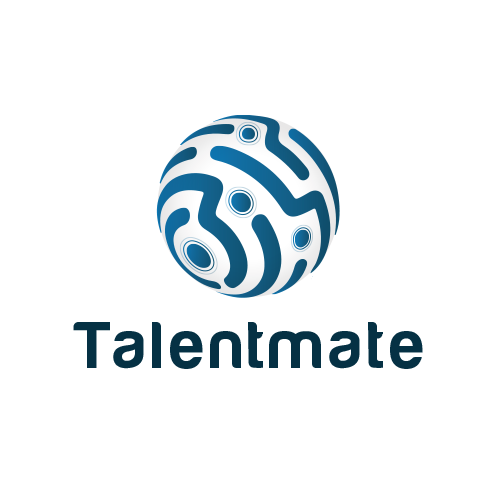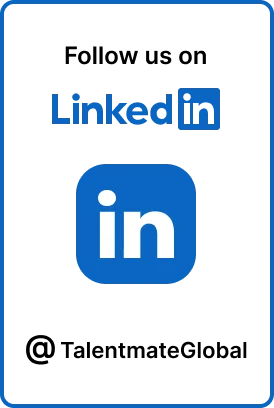
Lead - Mechanical QA
Talentmate
India
30th July 2025
2507-5396-17
Job Description
Group Company
ACGE
Primary Responsibilities
Functional-
- Quality Assurance Expertise: Demonstrate a comprehensive understanding of quality assurance (QA) processes, ensuring all FAT activities align with company standards, customer requirements, and regulatory norms.
- FTR (First Time Right) Implementation: Collaboratively lead the FAT team to achieve First Time Right execution across each stage of inspection and testing, minimizing rework and enhancing process efficiency.
- Execution & Problem Solving: Plan and execute FAT activities in accordance with project timelines. Identify operational challenges during FAT and inspection and proactively develop and implement effective solutions.
- Customer & Third-Party Handling: Serve as a subject matter expert for handling customers, Third Party Inspectors (TPI), and internal stakeholders during FATs, ensuring clarity, confidence, and satisfaction throughout the inspection process.
- Customer Complaint Analysis & CAPA Support: Lead the analysis of customer complaints, contribute to root cause analysis (RCA), and support the development and implementation of Corrective and Preventive Actions (CAPA) to ensure continuous product improvement.
- Continuous Improvement Initiatives: Drive and contribute to continuous improvement efforts by identifying process gaps and implementing changes that enhance FAT quality, reduce testing time, and ensure operational excellence.
- Technical Clarifications: Consult with Managers or Project, Engineering, Automation Heads for clarification on discrepancies related to part specifications, drawings, or documentation to ensure issues are resolved before FAT execution.
- Documentation & Compliance Knowledge: Maintain sound knowledge of qualification protocols, certifications, calibration procedures, and regulatory documentation required for successful FAT execution in a pharma environment.
- Pharma Equipment & Testing Expertise: Possess deep understanding of pharmaceutical machinery and their standard functional testing procedures, including compliance with cGMP, GAMP, and 21 CFR Part 11 requirements.
- Audit & Compliance Standards: Be familiar with standard auditing methodologies (e.g., ISO, ASME) and apply non-destructive testing (NDT) procedures as required during inspection.
- Cross-functional FAT Collaboration: Collaborate with cross-functional teams to highlight and resolve issues that may affect on-site installation and commissioning, ensuring all concerns are addressed prior to dispatch.
- Site Readiness Optimization (I-FAT): Ensure installation readiness by executing effective Internal FATs (I-FAT) at the factory, thus minimizing site installation time and reducing resource wastage.
- Validation Document Review: Review and verify all validation and qualification documentation during I-FAT, ensuring alignment with customer expectations and regulatory compliance.
- Mechanical BOM Review: Validate the Mechanical Bill of Materials (BOM) to confirm inclusion of all installation-critical parts, ensuring nothing essential is omitted from dispatch.
- Site Learning Integration: Integrate learnings from site installations into factory FAT protocols to continuously improve pre-dispatch testing, especially for electrical and mechanical components.
- Software Integrity Pre-Installation: Develop robust methodologies to minimize or eliminate the need for software modifications during site installation, thereby reducing commissioning time and risk.
- Packing Process Enhancement: Re-structure the packing slip format to include equipment Tag Numbers and standardize packing slip generation for better traceability and error reduction.
- Site Issue Resolution Coordination: Act as the central point of coordination for resolving factory-originated issues identified at the site, enabling immediate corrective actions.
Cross-Functional Collaboration & Quality At Source:
Objective: Develop and maintain strong, trust-based relationships with Cross-Functional Team (CFT) members—including Engineering, Manufacturing, Procurement, Quality Assurance, and Project Management—to drive a shared responsibility for quality from the very first stage of the product lifecycle.
Key Results:
- Reduction in quality issues detected during FAT due to upstream corrections.
- Timely resolution of inter-departmental issues affecting FAT readiness.
- Active participation in CFT meetings, design reviews, and root cause investigations.
- Implementation of design/process feedback from FAT into product development
- Quality Compliance & Standardization:
Key Results:
- Zero non-conformities in internal audits and customer FATs.
- 100% adherence to SOPs, checklists, calibration protocols, and document validation.
- Reduction in post-dispatch NCs (non-conformities) due to strict in-process adherence.
- Maintenance of up-to-date records and traceability for all FAT-related activities.
- Process Improvement & Efficiency Optimization:
Key Results:
- Measurable reduction in FAT cycle time through lean process enhancements.
- Implementation of automation or standardization tools in testing and reporting.
- Documented process improvements with quantifiable impact on quality and efficiency.
- Increased number of tests shifted from site to factory (I-FAT effectiveness).
- Customer Expectation Alignment:
Key Results:
- Positive customer feedback and satisfaction scores during and after FAT.
- Reduction in post-FAT changes or rework requested by customers.
- Increased rate of "First Pass" customer approvals during FAT.
- Safety and Risk Management:
Key Results:
- Zero incidents or safety violations during FAT execution.
- Timely implementation of safety recommendations or audit observations.
- Team trained and compliant with updated safety protocols and practices.
Internal Interfaces-
- AE
- PRD
- NPD
- A&C
- PSC
- PPC & Project
- Supplier
External Auditors (If any)
Third party inspector
ISO Auditors
Competencies
Plant QA understanding
Communication
Problem Solving
Delivering Consistent Results
Knowledge of Regulatory Compliance
Job Details
| Role Level: | Mid-Level | Work Type: | Full-Time |
|---|---|---|---|
| Country: | India | City: | Pune ,Maharashtra |
| Company Website: | http://www.acg-world.com | Job Function: | Quality Assurance & Control |
| Company Industry/ Sector: |
Pharmaceutical Manufacturing | ||
What We Offer
About the Company
Searching, interviewing and hiring are all part of the professional life. The TALENTMATE Portal idea is to fill and help professionals doing one of them by bringing together the requisites under One Roof. Whether you're hunting for your Next Job Opportunity or Looking for Potential Employers, we're here to lend you a Helping Hand.
Similar Jobs
Disclaimer: talentmate.com is only a platform to bring jobseekers & employers together. Applicants are advised to research the bonafides of the prospective employer independently. We do NOT endorse any requests for money payments and strictly advice against sharing personal or bank related information. We also recommend you visit Security Advice for more information. If you suspect any fraud or malpractice, email us at abuse@talentmate.com.









